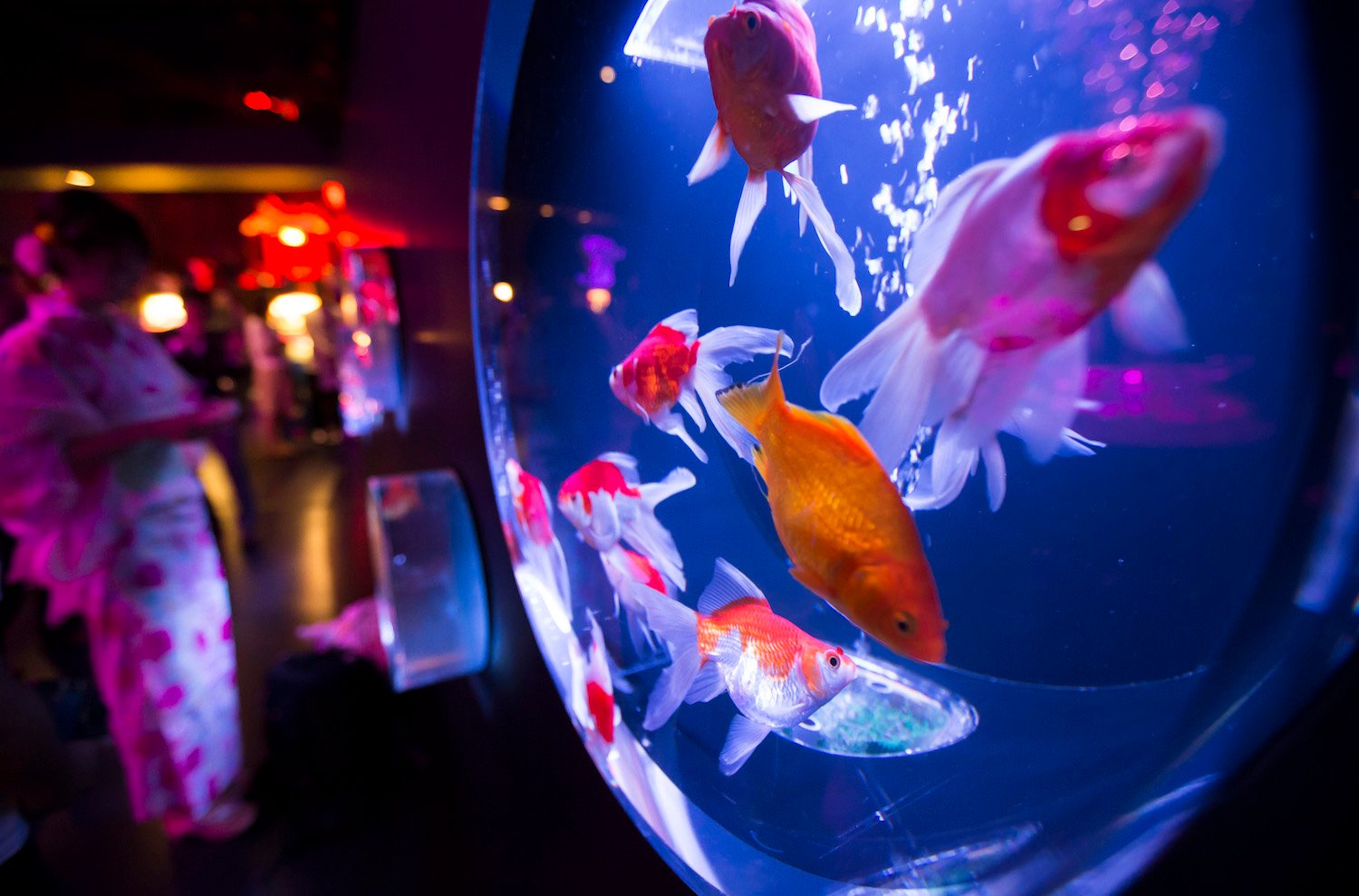
For the last 10 years, the hottest art ticket in Japan just may have been Hidetomo Kimura’s annual “Art Aquarium” exhibitions, which house thousands of goldfish in 130 gorgeous faceted glass tanks, lit with colored light. The 2017 edition of the show, which opened July 7 and is expected to draw tens of thousands, celebrates a decade of this bizarre yet beautiful art form.
“Since I started my job from collecting marine fish from all over the world, I have been attracted to the colorful beautiful fish which naturally grace the sea,” wrote Kimura, the world’s premier “aquartist,” on the exhibition website.
The “Art Aquarium 2017” exhibition at Nihonbashi Mitsui Hall, Tokyo. Courtesy of China Global TV Network via Facebook.
This year’s exhibition contains no less that 8,000 sea creatures, including 5,000 goldfish, called kingyo by the Japanese. Since first being imported from China in the early 1500s, kingyo have been carefully bred to create ornamental creatures with exaggerated features.
Kimura’s psychelic display showcases the many kingyo varieties in sculptural fishbowls. Some are shaped like Japanese lanterns, while others are embellished with lace trim. Still others feature concave and convex lens that magnify or otherwise distort the view of the tanks.
The “Art Aquarium 2017” exhibition at Nihonbashi Mitsui Hall, Tokyo. Courtesy of China Global TV Network via Facebook.
The fish unwittingly become part of the art, in some cases swimming back and forth against an LED screen featuring sakura blossoms floating gently on the wind. A new piece for 2017 features Black Moor goldfish, imitating Japanese ink painting by projecting their constantly moving shadows onto a white screen.
“I wanted to create an artistic installation which is alive by using real fish, rather than materials or pictures,” Kimura told Reuters.
The “Art Aquarium 2017” exhibition at Nihonbashi Mitsui Hall, Tokyo. Courtesy of China Global TV Network via Facebook.
Tickets cost 1000 yen ($8.75), with several special evening performances, featuring traditional Japanese music, taking place during the exhibition’s run.
“Art Aquarium 2017” is on view at Nihonbashi Mitsui Hall, COREDO Muromachi 1, 4F, 2-2-1 Nihonbashi Muromachi, Chuou-ku, Tokyo, July 7–September 24, 2017.